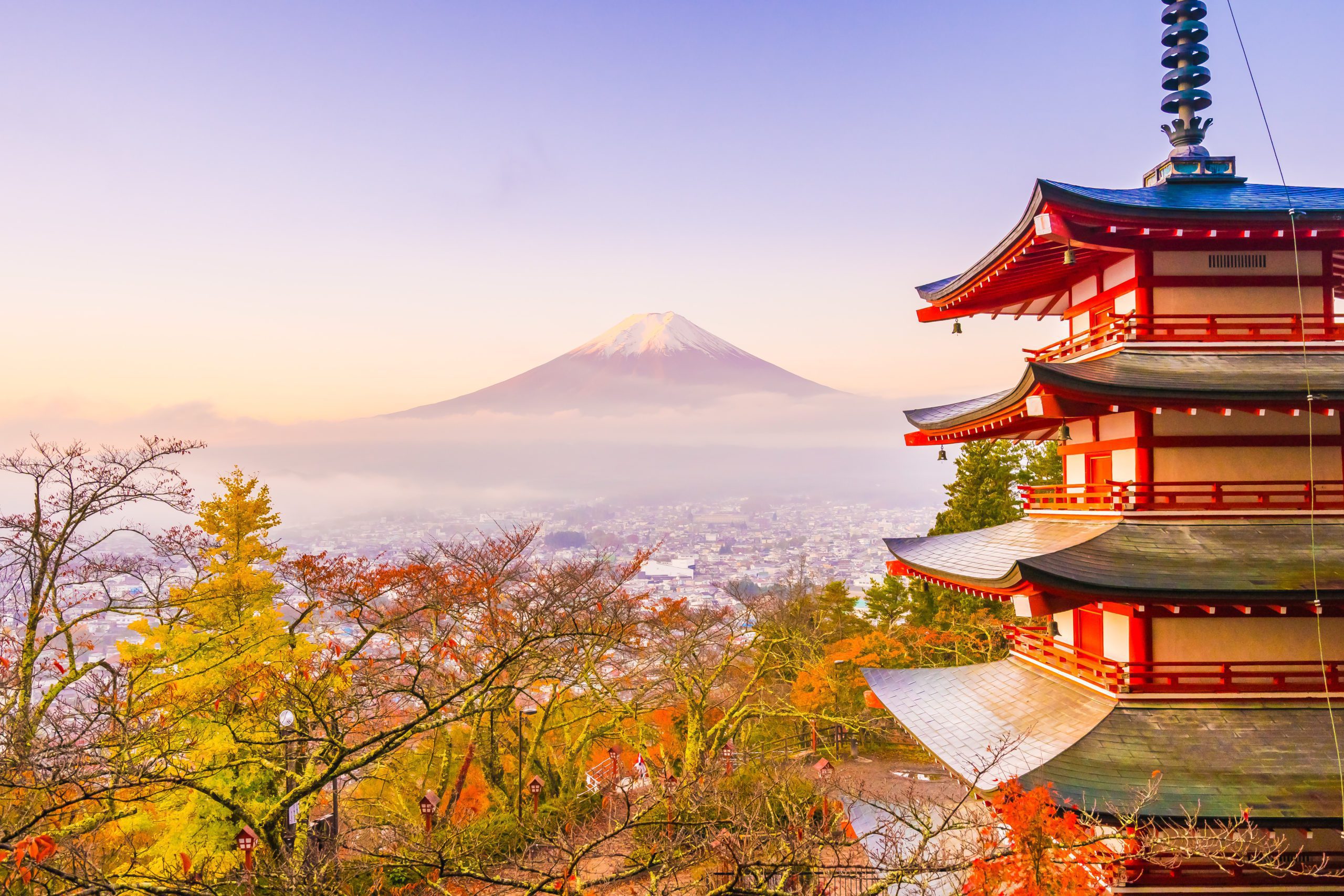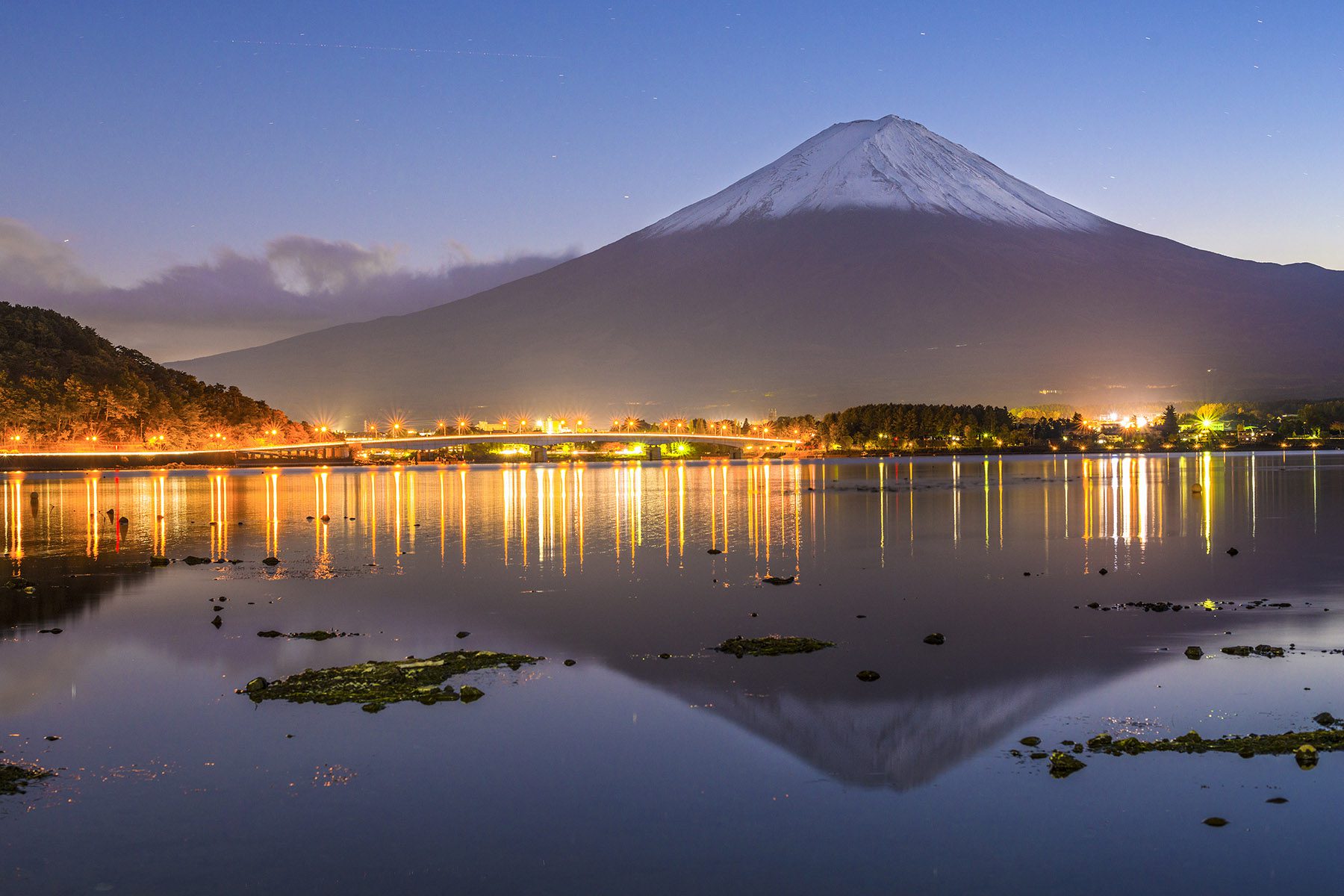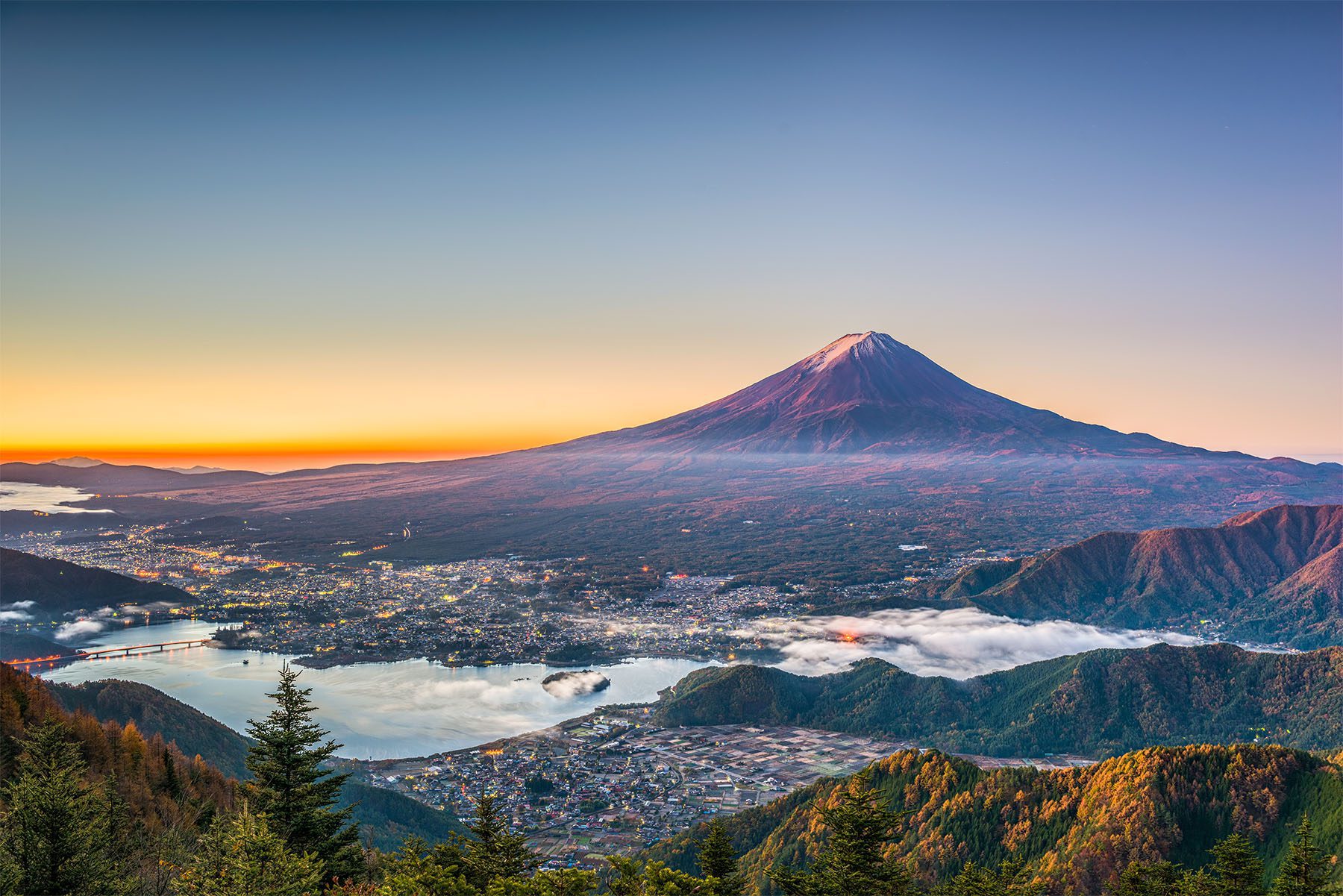Mt Fuji
The noble beauty of Mt. Fuji
An iconic volcano that needs no introduction. Stroll around Fuji Five Lakes, the trailhead from the fifth station, or roam around the foothills.
Discover Mount Fuji
Travel southwest from Tokyo to marvel at Mount Fuji. A national emblem of Japan, Mount Fuji is deeply synonymous with Japanese culture and has been represented throughout Japanese art and literature for centuries. Standing at a whopping 3,776 meters tall, admire the contrast between the black volcano side and the powdery white snow which caps Mount Fuji for almost half the year. Visit during Sakura season to see Japanese cherry blossoms blooming around Fuji’s five lakes, making for a spectacular spread of pale pink across the landscape.
A designated UNESCO world heritage site, Mount Fuji is also considered to be one of Japan’s ‘’Three Holy Mountains’ as the summit has always been regarded as sacred. During the 12th century, Mount Fuji became a center for training in ascetic Buddhism. Many Shinto shrines were set up around the site of the volcano so that worshippers could admire from afar when there was risk of eruption or take part in pilgrimage when the volcano was dormant. Mount Fuji is currently dormant and has not erupted since 1707.
Whether you would like to enjoy the view of Mount Fuji from afar at one of the major viewpoints or see Fuji-san up close with a hike to the summit, there are plenty of options for adventure. The official climbing season occurs from July to early September, when the snow has melted, and trails are open. Climbing Mount Fuji is accessible during good weather, and many of the trails and facilities are well-equipped to accommodate large numbers of visitors. There are four major trails available to reach the summit. The Yoshida trail is the best option for casual climbers, it is the easiest and features first aid posts and mountain huts. For more experienced hikers, The Subashiri trail provides ample challenge and enjoyment. Bullet hikes (a hike where you attempt ascent and descent consecutively) are highly discouraged. It is highly recommended to break overnight between ascent and descent to rest and allow time to acclimatise to the altitude. Mountain huts provide basic accommodation for rest. For additional thrills, consider paragliding from the fifth station of Mount Fuji with one of the paragliding schools for an adrenaline-rich experience of Fuji-san.
The Fuji Five Lakes region sits at the base of Mount Fuji and comprises Lakes Kawaguchiko, Saiko, Yamanakako, Shojiko, and Motosuko and provides the best spots to view Fuji-san in all its splendor. The region provides a ton of attractions, from campsites and hiking trails to boat rides and fishing spots. Lake Kawaguchiko is the most popular of the lakes and usually features in most of the picturesque posters and advertisements depicting a lake view of Mount Fuji. Stay in one of the many lakeside hotels and head to one of the many local restaurants to sample the region’s famous ‘hoto noodles’, an extra thick form of udon noodles served in a rich miso broth alongside pumpkin. Head to a nearby amusement park, Fuji-Q Highland, for some family fun and see Mount Fuji from a fresh perspective while riding on Fujiyama, once the world’s tallest rollercoaster.










